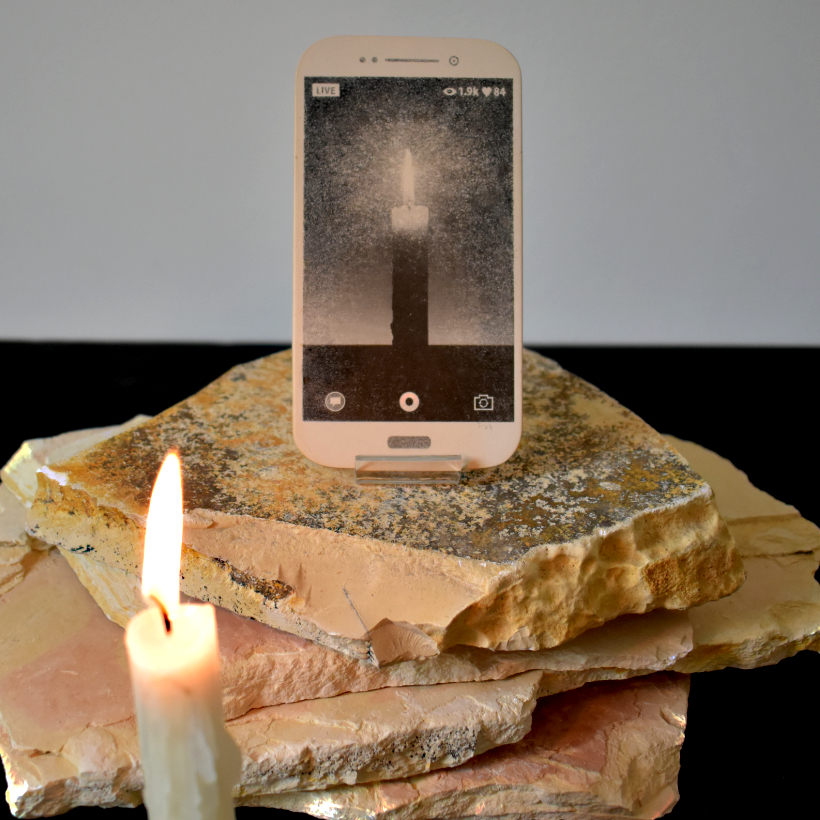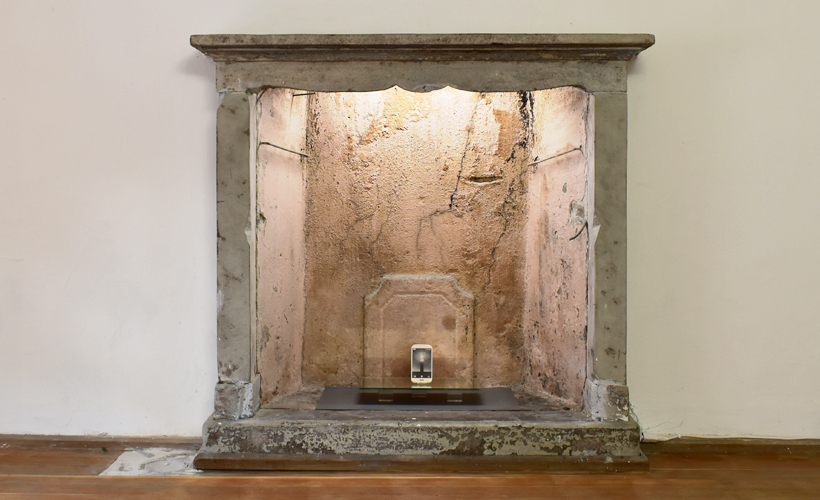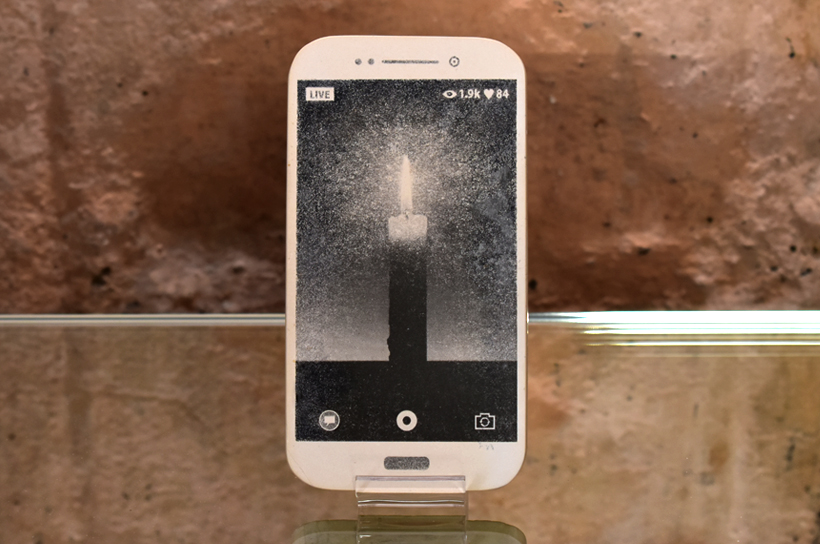The artwork "Watching #candle" is a smartphone-shaped limestone sculpture with a photograph of a candle flame.
Candles not only bring light to darkness, but can also be used for birthday celebrations, for meditation and for prayer. Variations and flickers of brightness of the flame may show us a symbol of life and a hope for eternity. A melting candle sometimes looks like tears falling. Watching the flame of the candle invites us to a time for inner healing.
This work also suggests connection to the history of media.
The founder of video art, Korean American artist Nam June Paik (1932–2006) made his series of artworks "Candle TV" from the 1960s to the 2000s. His works feature a single candle lit inside the shell of a vintage television set.
"A single lit candle stands inside the shell of a vintage TV. Light represents the beginning of human civilization. Paik once said that a light source is like a piece of information. In this work, he considered television the beginning of a new type of civilization."
(*1)
And he organized the first international satellite art event, Good Morning, Mr. Orwell(*2), in Paris and New York on New Year’s Day 1984. The title of the event was in reference to the English novelist George Orwell's dystopian science fiction novel 1984 and made predictions about the future influence of media. In the same year, Apple released its first Macintosh computer, the Macintosh 128K.(*3)
Orwell's 1984 was published in 1949, just four years after of the atomic bombing of Hiroshima and Nagasaki. In the novel, “telescreens” are devices like televisions, with cameras and microphones, capturing and sharing countless images, just as today's smartphones do.
During Niitsu creates this work, many videos from the scene from demonstrations, incidents and events around the world were broadcasted in real time on the social network, using smart phones. Niitsu was particularly interested in the fact that the availability of live images that even individuals could provide from all over the world allowed for the sharing of events from a different perspective.
Here Niitsu pays homage to Paik and extends his concept. She sculpted a limestone in the shape of a smartphone instead of Paik's television, and on the screen, there is a live streaming image of a burning candle, and it shows that 1,900 people have accessed it, with 84 people "liked" it. This flame is a visual that can be interpreted in many ways.
In contrast to the age of the instantaneous, Niitsu's "Watching #candle" invites the viewer to contemplate and meditate on the history of media and technology, and our vision of the future, through natural materials. The limestone from 145 million years ago that used for this sculpture represents the history of image reproduction and visual communication, and at the same time, its testament of today.
*


